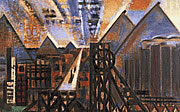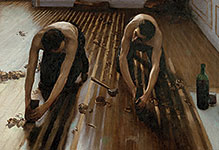
Daily Life
Work, Leisure, Clothing and Textiles, Politics and Portraits, Furniture, Houshold, Funerals, Death, Murder, Family.

#03010270
"Head of the colossal sphinx", Egypt, around 1801. From "Views in Egypt, Palest...

#030301 4
Silver lyre, from Ur,southern Iraq, 2600-2400 BCE. This lyre was found in the "G...

#030301 5
The "Standard of Ur", southern Iraq, 2600-2400 BCE. Found in one of the largest...

#030301 8
Gold bowl, from Ur,Southern Iraq,2600-2400 BCE. It was found in the Queen's Grav...

#030301 9
Shell plaque from Ur, showing two rams.From the grave of Pu-Abi, see 03-03-01/8....

#03030110
Ostrich egg and jar found by Leonard Woolley in the cemetery at Ur. In antiquity...

#03030111
Sceptre from Ur,Mesopotamia,2600-2400 BCE. Found by Leonard Woolley in the large...

#03030113
Steatite jar, from Ur,southern Iraq, 2600-2400 BCE. This bowl demonstrated the e...

#03030114
Stone basin, Ur, southern Iraq, early Dynastic period, 2600-2400 BCE. Soft stone...

#03030115
Silver jar, from Ur, southern Iraq, 2600-2400 BCE. This spouted silver jug comes...

#03030123
Statue of Ashurnasirpal II (883-859 BCE), from Nimrud, northern Iraq. It was pla...

#03030130
Cylinder of Nabonidus, Neo-Babylonian from Sippar, southern Iraq, 555-540 BCE. T...






